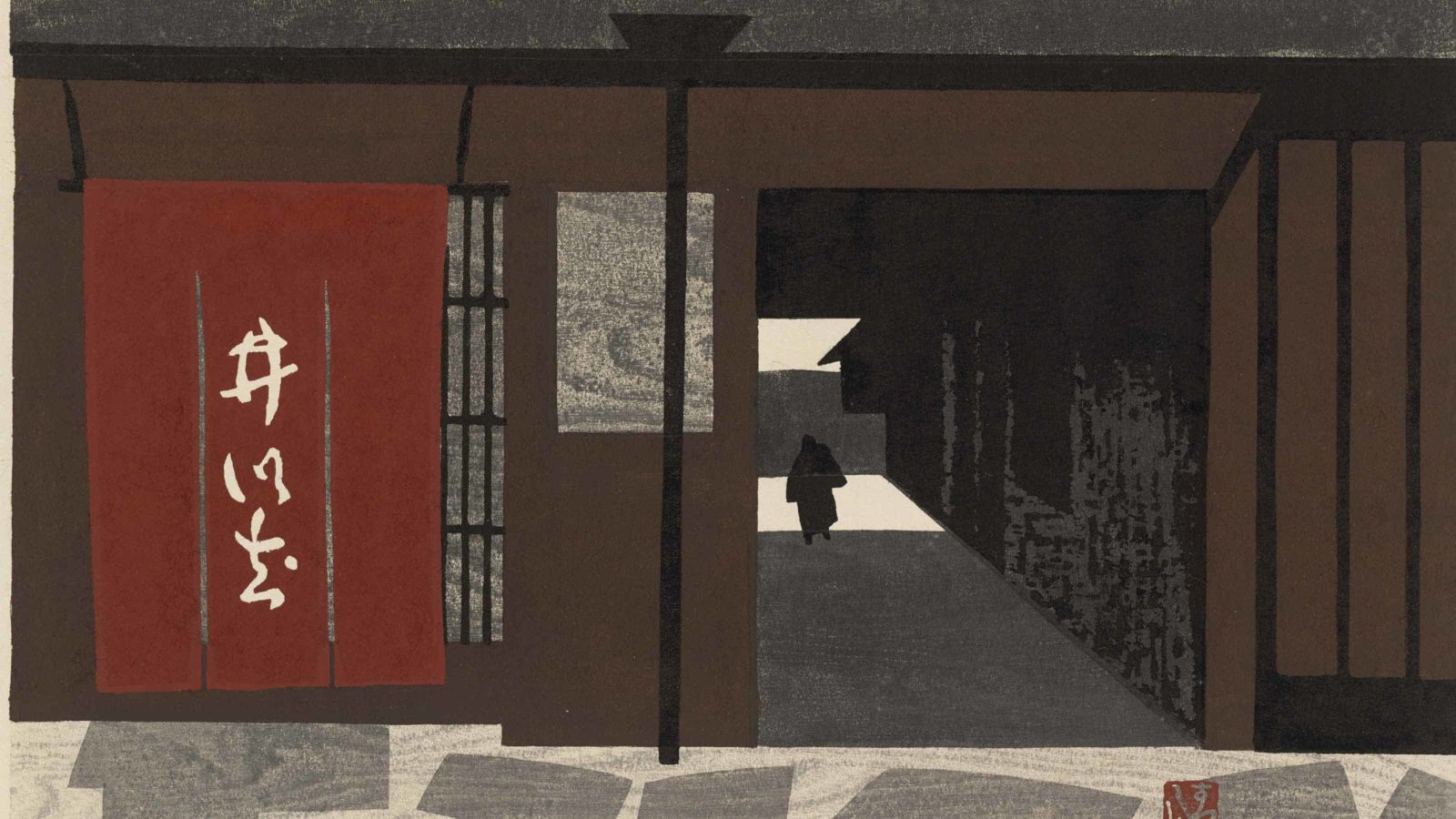The ground stretches away to the horizon, and the scuffed earth looks rough and glinting, like a flat sea under a lowering cloud. In the distance a low wall stretches in a white streak, with one break and a house out past it. The sky is a deep red ochre, as deep as the leaves that should be falling from the lean, bare trees.
An image like Saitō Kiyoshi’s Autumn in Nanzen-Ji (1971) is not a classical inkbrush painting, and it’s not a Kandinsky … but Oliver Ruhl thinks it may be kin to both. Saitō’s work has roots in the centuries-old Japanese tradition of wood block printing, in the contemporary style of Sōsaku-hanga. And Ruhl is tracing the way those roots have grown.
This fall he has curated Competing Currents at the Clark Art Institute, November 6 to January 30, tracing two movements in Japanese art in the 20th century, as they put forward visions of how wood block prints could develop as an artform into the future.
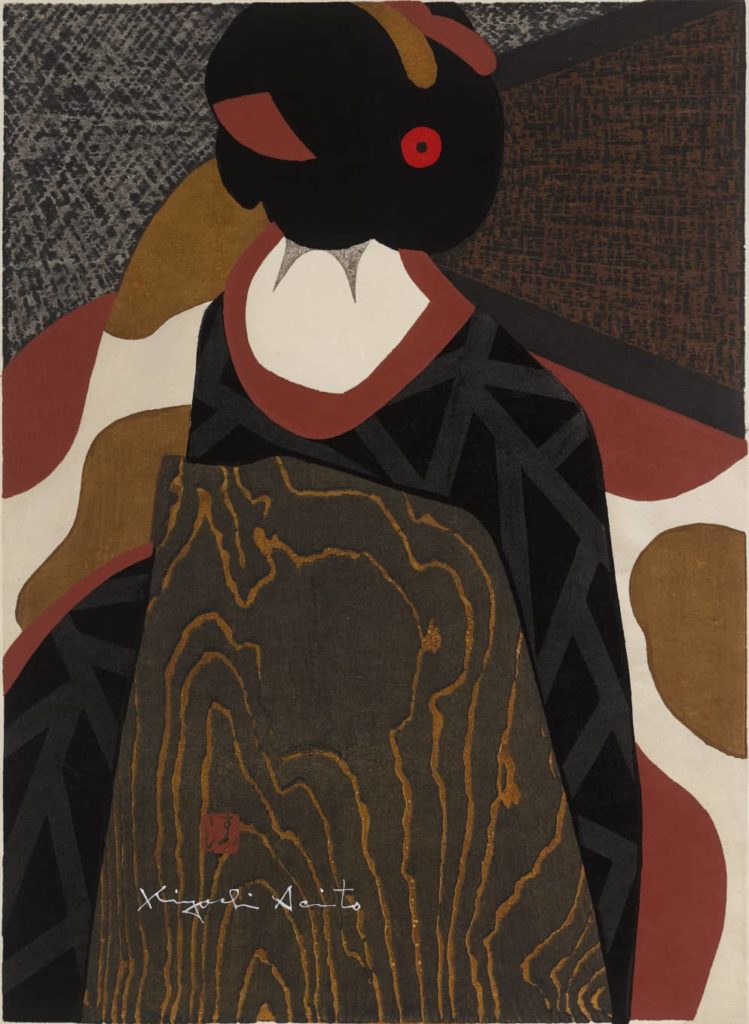
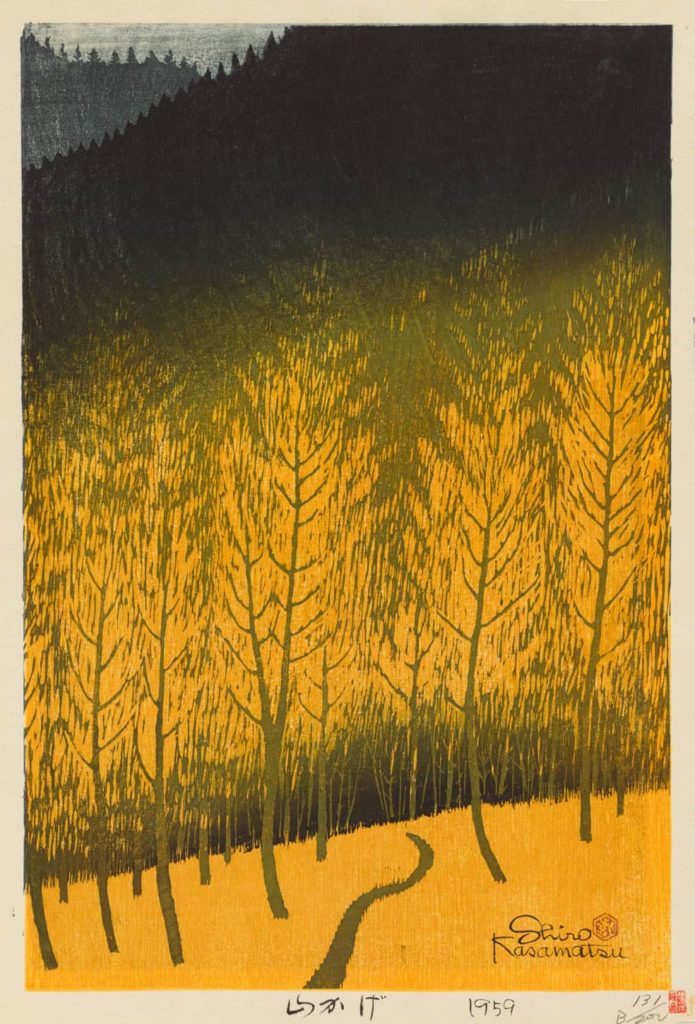
He first got to know them as a graduate student in art history at Williams College, he said by phone from Los Angeles, where he is working toward his PhD at UCLA. Here, he was working with Anne Leonard, Manton Curator of Prints, Drawings, and Photographs at the Clark. Exploring the collection, Ruhl came to works of Shin-Hanga, wood-block prints from the early 1900s.
“I was stunned by them, amazed,” he said — “I hadn’t seen anything like them before.”
‘I was stunned by them, amazed — “I hadn’t seen anything like them before.’ — Oliver Ruhl
Kawase Hasui catches people walking with bright umbrellas under a driving rain and a low overcast sky. Yoshida Hiroshi shows the lights of restaurants shimmering on wet streets at night.
They came out of a tradition more than 200 years old, and they changed it to show deep and realistic color, city streets and new perspectives. They held his attention, Ruhl said. And he followed them forward, as wood-block prints evolved in and after World War II, and into the 1960s and 1970s. A new movement rose — Sōsaku-hanga, creative prints. He finds them experimental, ruggedly visceral and Modern. And he is intrigued by the contrast.
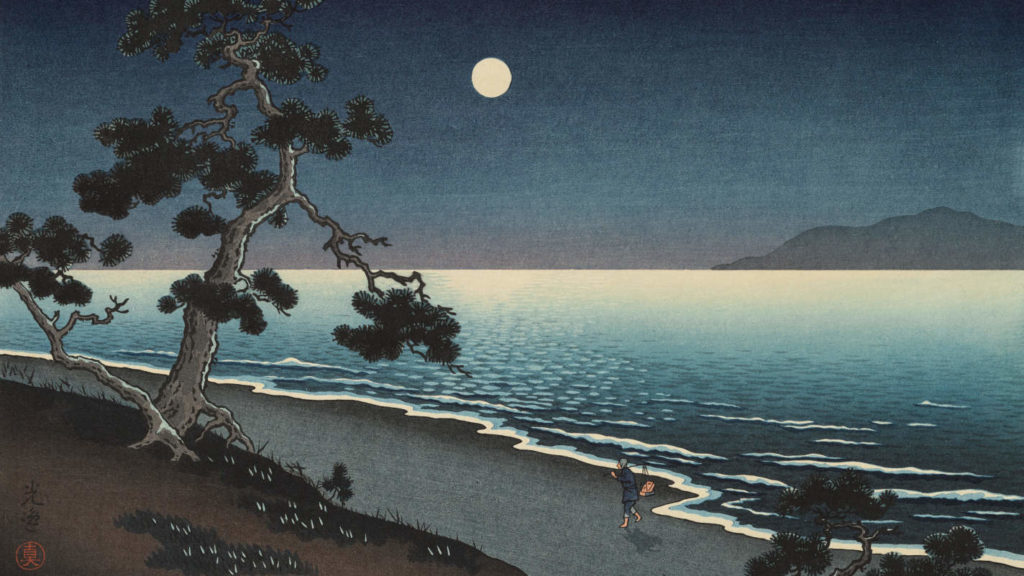
A fill moon rises over the water in Tsuchiya Koitsu's print, Suma Beach. Press image courtesy of the Clark Art Institute
Wood block prints, Ukiyo-e, became popular in Japan the 18th and 19th centuries, he said. Ukiyo-e — pictures of the floating world — had grown with a growing middle class who had the free time and the resources to travel. They wanted beauty and entertainment, a fantasy of geishas and kabuki theater. For centuries, art had belonged only to the very wealthy, and now wood-block printing meant less expensive images — a merchant could hang a scene on his wall or send a post card from a tea house.
Japan in a changing world
But in the late 19th and 20th centuries, Ukiyo-e began to seem old-fashioned, Ruhl said. Magazines and photography became popular. It was a time of change, industrialization and political friction. In 1853, under the threat of U.S. guns, Japan had been forced into new trade agreements with the West. In 1868 the capital moved from the ancient cultural center of Kyoto to the industrial city of Edo — Tokyo — which was and is one of the most populous cities on the planet.
Outside of Japan, Ukiyo-e prints were traveling the world, Ruhl said. They were filling print shops in Paris and influencing Impressionists from Van Gogh to Monet. They were widely popular across Europe and the U.S. But in Japan, the art form was waning. The movement of ideas flowed in both directions, he said. Artists were studying each others’ work, traveling and exhibiting, reading avant garde periodicals.



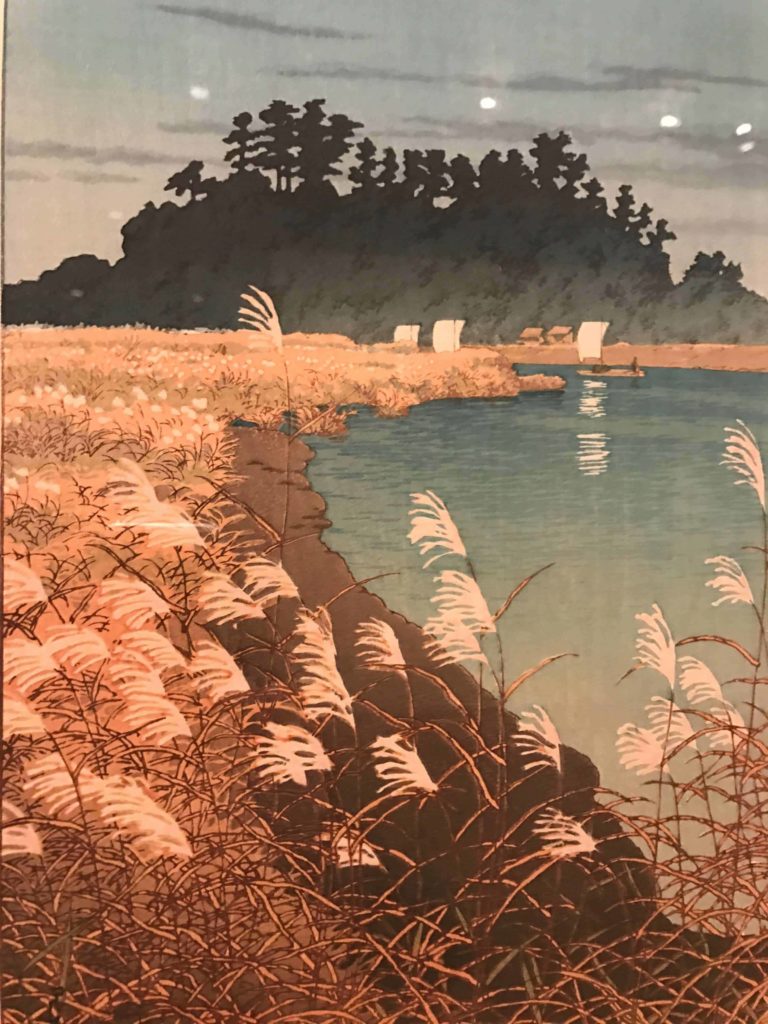
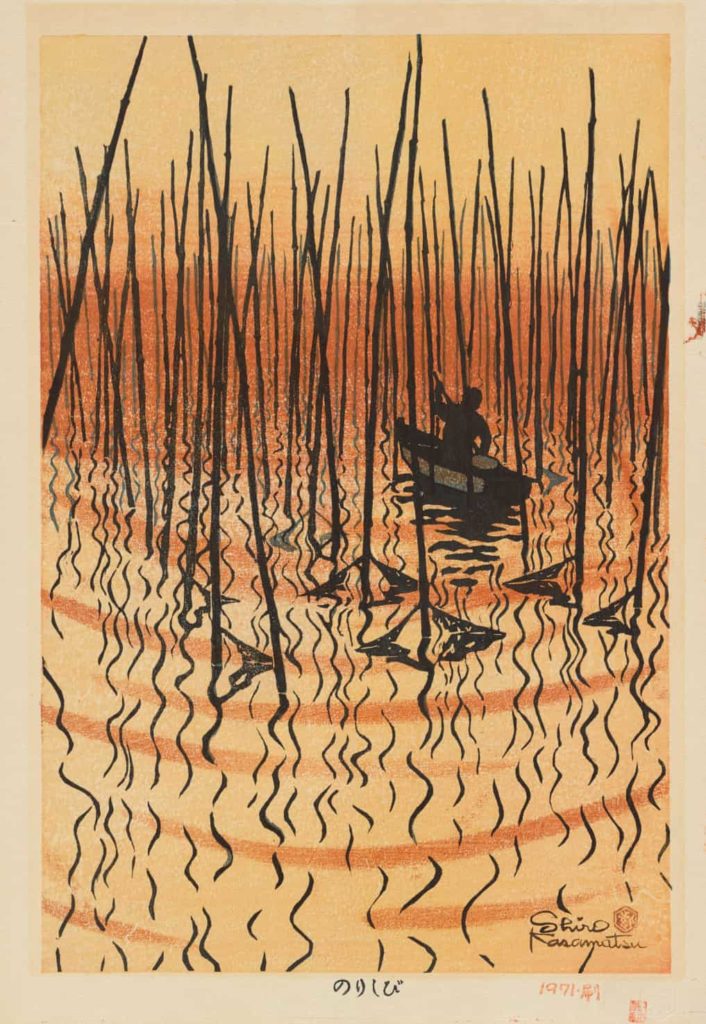

Out of this shifting time, Shin-Hanga emerges. Shin means new, Ruhl explained. Japan saw many ‘shin’ movements at the turn of the 20th century — new culture, new politics, new energy. In 1915, the publisher Shōzaburō Watanabe first used this name for the art movement — Shin-Hanga, new prints.
He wanted to re-invigorate the power of wood block printing, Ruhl said. Under Watanabe’s eye, a new generation of artists would come to Ukiyo-e with new perspectives.
Ukiyo-e has a long tradition of detail, fine shades of color and line, and space shown in overlapping planes. One element may appear large and close in the foreground, like a maple leaves from a nearby tree hovering in front of a view across a valley, and smaller elements behind it give a sense of space.

Yoshida Hiroshi, 1876-1950, Fujiyama-First Light of the Sun, 1926. Courtesy of the Hyde Collection and the University of Syracuse
In prints like Hasui’s, Ruhl sees these elements translated. Hasui’s images have a new kind of realism, a point of view Western artists had evolved since the Renaissance, a diagonal sense of space that gives an illusion of three dimensions.
Printmaking can be a slow and careful process, Ruhl said, and it has its own set of restraints. In Shin-hanga, the artist would paint the original scene and hand it to woodworkers who carved the blocks and printers who mixed and layered in the hues. They might keep the artist involved — Hasui could take weeks going over test prints and making changes, like a pianist practicing runs to tone his inflection.
The carvers had to work in minute detail, by hand, and they had little room for mistakes. They could not easily add new elements, Ruhl said — they were removing wood to leave only the shape of what they wanted the colored ink to touch.
“You’re carving around what you want printed,” he said. “In drawing you can can put more graphite on the page to create a new form. In wood blocks, you’re carving away to create a raised surface, (to show what you want to print), reflections, raindrops, snow.”
‘ In wood blocks, you’re carving away to create a raised surface … (to show) reflections, raindrops, snow.’
That relationship and constraint became one of the central differences between Shin-Hanga and its newly evolving cousin. In Sōsaku-hanga, creative prints, the artists make their own blocks, roll their own inks and make their work themselves from start to finish.
Sōsaku-hanga artists saw Shin-Hanga as conservative, he said, re-creating beautiful sites for a foreign audience. Ruhl sees Shin-Hanga artists showing an element of nationalism, rejecting Western influence. He can see in their ideals a reaction against mechanized, manufactured urban spaces and a look back to a pre-Modern Japan.
“You can see that in (Shin-Hanga’s) minute, precise reproductions of the natural world,” he said. “Hasui is a master at this.”
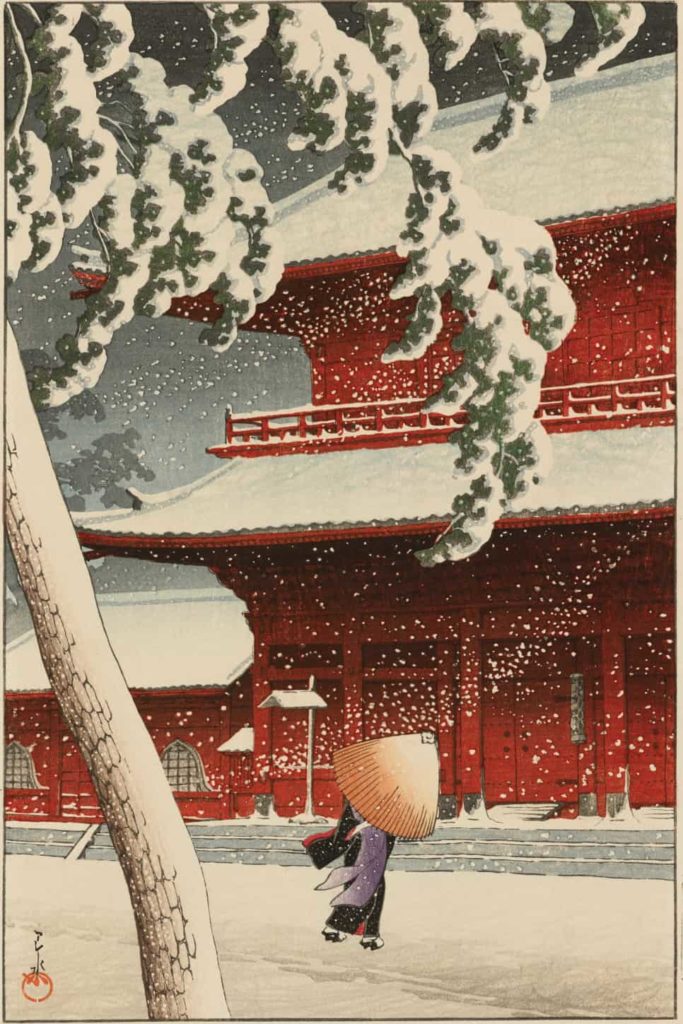

Hasui is recalling an almost dreamlike pre-modern Japan, Ruhl said — not many power lines or big buildings. He keeps an intentional focus, and his scenes are often outdoors and calm — a stone bridge over a river, or salt marsh and sun on the ocean.
But his world was rarely tranquil. He was painting between two World Wars. His Rain in Uchiyamashita, Okayama District (1923) survived the Great Kanto Earthquake of 1923 and the fires that burned through Tokyo — and destroyed the warehouse that held most of his work. As World War II broke over Japan, Ruhl said, Shin-Hanga was ebbing. The war halted many kinds of art, as it rearranged artists’ lives.
In and after the war, Sōsaku-hanga emerged more strongly. Ruhl sees in it a wider variety of experimentation and expression. In strong lines, geometric shapes and solid color, these artists were leading a movement toward abstraction. Their work heightens a flattening effect — much the same effect the planes in Ukiyo-e had brought to Western eyes. Now contemporary Japanese artists were playing with that effect in new ways, Ruhl said. They brought their own views to Modernism.
Avante garde movements in art
They looked to the past and future, sometimes inspired by Japan’s earliest prints, eighth-century Buddhist sutras, and by Buddhist temple architecture, and Buddhist clay sculpture images in earth tones. At the same time, Ruhl sees them in conversation with Western Modern artists and European printmakers, especially the abstract emotion of the German Expressionists.
Sōsaku-hanga artists often play with a sense of touch, he said. They let the surface of the block show in the print. The textures of the wood curl like folds of cloth in the pattern of a kimono — or the grain of the wood informs the way a figure is standing or moving, quiet or taut or coiled to spring.
When the artist has the wood in their hands, Ruhl said, cutting the block and mixing the inks, they can have a different feel for what the wood and the colors will do.
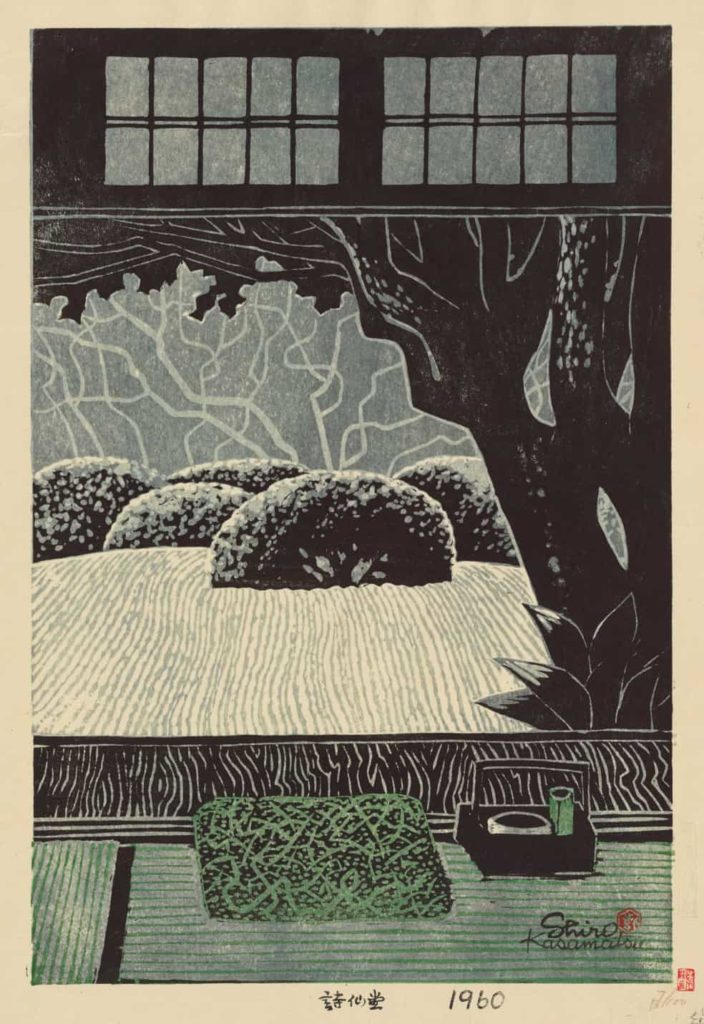
Snow seems go shimmer in the moonlight in Kasamatsu Shiro's print, Shisendo temple garden. Press image courtesy of the Clark Art Institute
“It goes back to the ways they’re working, themselves,” he said. “If I’m a designer and I never touch the wood, you can see how a disconnect may arise. When you’re creating the design and making the carving, you can have an understanding and connection.”
Sōsaku-hanga artists had a wider freedom in some ways, he said, not only in making their work, but in sending it into the world. They were not working through a publisher who controlled distribution, and so they could exhibit on their own.
In the West, he said, artists were holding their own shows in warehouses and college classrooms when museums refused them. They were opening their own collectives — actors performing on highway medians and poets printing chapbooks.
In Japan, Sōsaku-hanga artists were finding independence both a challenge and a release. More than a few of them worked their way up, Ruhl said. Saitō Kiyoshi, who would become one of the best known artists in the movement, began as a commercial sign painter. He moved from the country to the city, from Hokkaido in the far north — an island as cold as the Russian steppes — to Tokyo in 1932, and it would take him 20 years to make his name known.
According to the Ronin Gallery, which represents his work in the U.S., in Tokyo he painted in oils and studied at the Hongo Painting Institute, and he began experimenting with woodblock prints and exhibiting his works with the Japan Print Association in 1936. But he sold his first woodblock only late in the war, eight or nine years later.
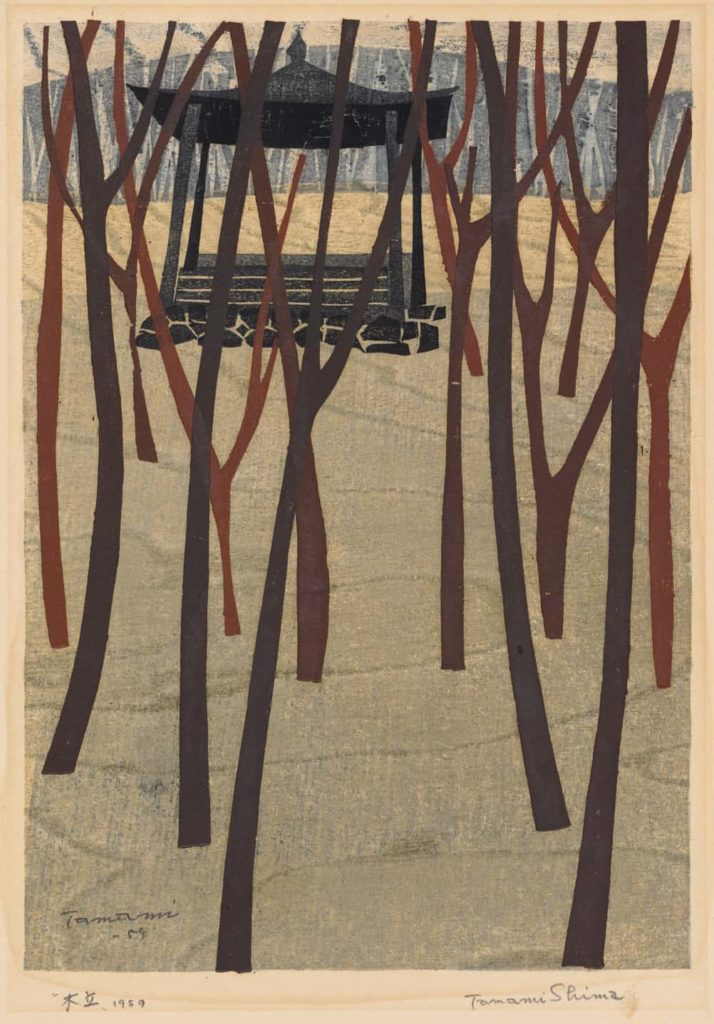
Saplings stand dark against the snow in Shima Tamami's print 'A Stand of Trees.' Press image courtesy of the Clark Art Institute
He began reaching a wider audience among Americans stationed in Japan in the 1950s, Ruhl said, and in 1951 he won international recognition at the inaugural São Paulo Biennial. He would go on creating work for a global audience. In 1967 he designed and printed the first woodcut ever to appear on the cover of Time magazine, a portrait of Japanese Prime Minister Eisaku Sato. He shows the Prime Minister in profile, in shadow with a strong light shining on his face and wood grain rippling in the dark blue background like ocean currents seen from above.
Sōsaku-hanga was earning international attention, Ruhl said, and drawing in artists who had never been part of Japan’s established art world, but women had a still harder time becoming part of it. Ruhl has included at least one woman in this exhibit, Shima Tamami — the Clark has a print of her work, A Stand of Trees (1959), in their collection.
She appears as one of very few women who have shown their work in the sōsaku-hanga movement, Ruhl said, though she graduated from Tokyo Women’s University of Arts (Women’s College of Fine Arts) in 1958 and made more than 60 prints.
In this one, bare trees stand in shades of copper and bronze and grey. A roughened texture shows in the shadows and the surface of the snow. Trails of meltwater or animal tracks trace the slope, and it feels foreshortened, in the way an iPhone photo of a steep hill can look almost flat and level. She gives a sense of distance in the open-sided pavilion just visible through the trees and the grey curve of the mountain on the horizon.

